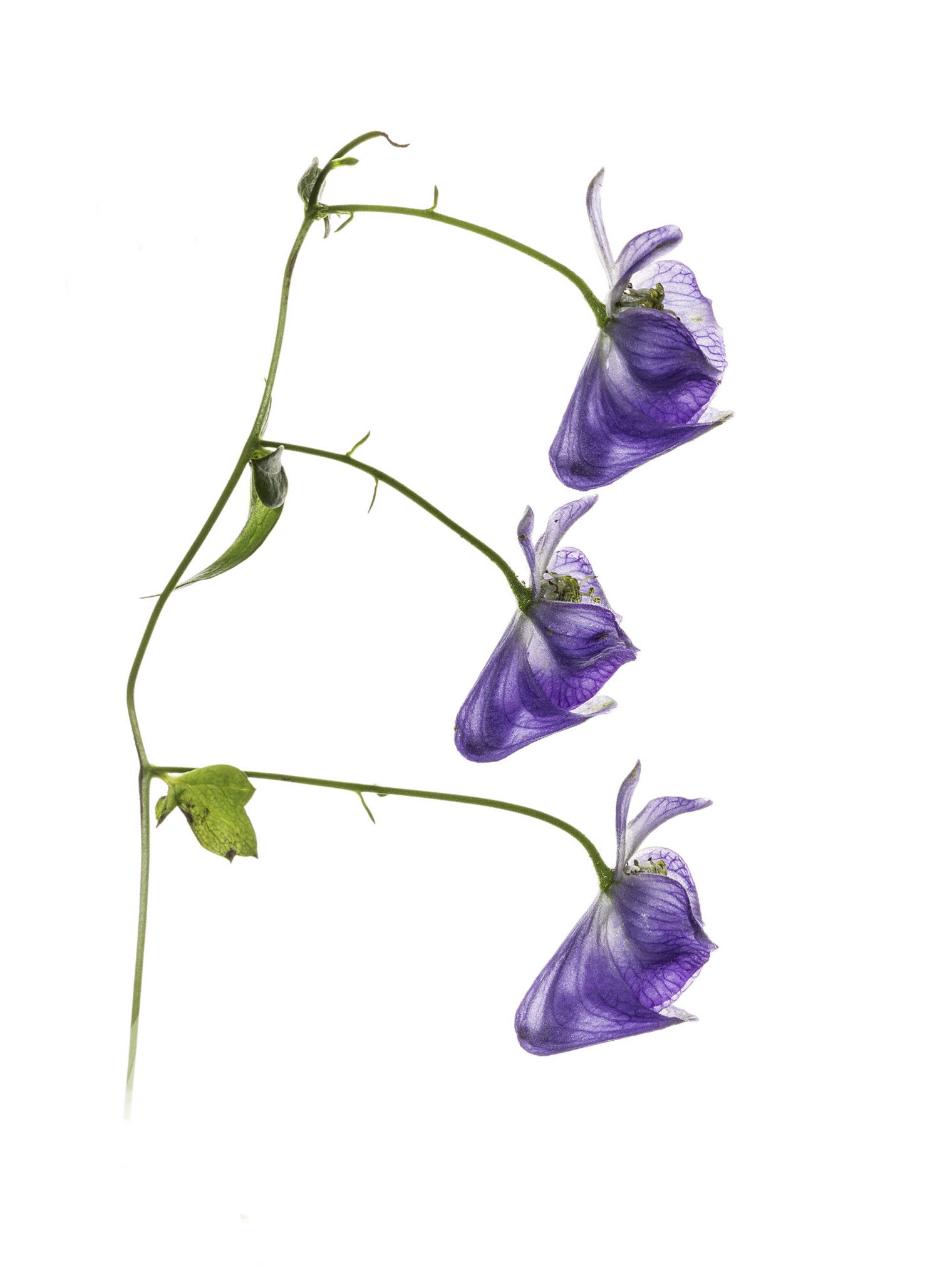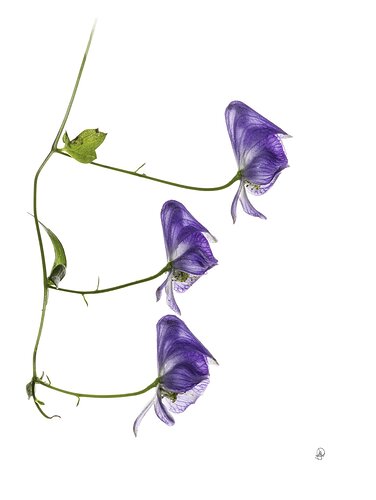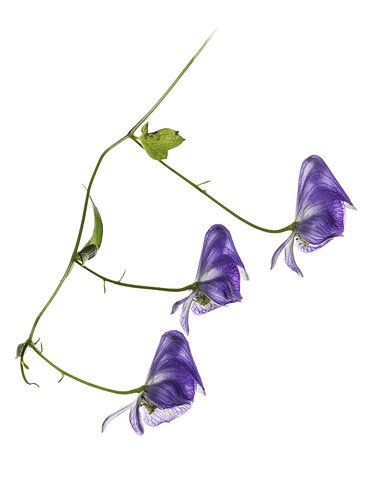Aconitum uncinatum is a rare native of the eastern US. It blooms late summer in low woods and damp slopes, thickets, wet areas along streams and springs.
This is a tough flower to isolate and photograph. It grows on a steep limestone slope once a railroad line and in the center of a blackberry thicket.
Specific Feedback Requested
All comments are welcome.
However, graphically this image has been a challenge to place in the frame to my satisfaction.
Technical Details
Is this a composite: No
Lightbox background with flash, 2 small flash units on the front of the lens.
100 mm, f 22, ISO 250
paulgwiegman
2 Likes
So amazingly delicate, Paul. It looks to me that all of your efforts have been rewarded. The detail in the petals is wonderful. Very nicely done.
1 Like
Glad you got the possibility to capture this one. It is a really good composition and the details of the flowers are delicate.
1 Like
Hi Paul,
Looks good and you were able to get a very satisfactory comp with this plant. I think that this is fine as presented…Jim
Thanks, @Ola_Jovall @linda_mellor @Jim_Zablotny; I appreciate the responses.
They help to heal the myriad of small wounds inflicted by the blackberry canes.
This colony of A. uncinatum is located were setting up a tripod is next to impossible, even with my trusty Benbo. I have to resort to balancing the lightbox on the thicket of arching canes. That requires entering the thicket at two points and multiplies the encounters with thorns.
Namaste
2 Likes
As an alternative comp I rotated the flower and stem to set it at an angle. Just a thought.
1 Like
Paul this is stunning. I don’t have any thoughts on place in the frame…your’s is fine.
Thanks for the technical info too. I have recently decided I need to invest in some kind of light box and lighting so that I can do some flower work indoors. Your images are inspiring me to make that a priority for me.
I like @Patricia_Brundage’s rotation – it feels a little more relaxed. I also tried this – about 30 deg CW then flip vertically. But it’s probably not true to how the blossoms hang.

@Diane_Miller @Patricia_Brundage Thanks for the suggestions. I’ll be frank that my first look was - what???
However, I switched off my botanical gaze and took a more graphical approach. You know, both the rotation and the flip bring a whole new look. The angle of Patricia’s take adds some dynamics, and Diane’s flip creates a whole new species that is perfectly reasonable.
What is needed is to rid the image of the original intent of highlighting a single species and approach the subject from a graphically pleasing presentation. The background needs to lose the pure white and be replaced with something more interesting.
I’ve always wanted to have some of this portfolio presented on “aged paper” - tan with grain and creases, watermarks, and dog ears. I’ve tried some things, but nothing worked. I’d also like to add a series of echos of the flowers fading into the background.
Seeing Diane’s cactus flower means now is the time to learn layers in Photoshop.
Namaste
Layers in PS can be learned in about 5 minutes. There is a tutorial on my web site, https://dianemiller.smugmug.com/. It’s old but still relevant. If I re-read it I’d probably take it down and re-do it, but I don’t have time.
Aged paper would be great! And I think you might be able to do it the easy way. Go to a good art supply store and look through the handmade / vellum / tissue papers – not sure what they would be called, but some interesting ones will be translucent enough to use instead of your white BG, or attached to it. You can also stain papers to make them look aged with tea, but flattening them again could be a challenge.
But if you do a texture in PS you have more leeway to position interesting elements. You could photograph the distressed papers you mentioned and use them as a BG. You can buy bundles of textures but most are not to my liking.
With your white BGs it is easy to select the whites and mask them to reveal a BG layer underneath. If the BG is a bigger file you can then move it around or distort it as desired.
I couldn’t stand it and am already do some editing on the article – stand by, I should have it posted by later this evening. I seem unable to write coherently without numerous edits. (I’m so glad I got as far in math as differential equations, where I learned the method of successive approximations…)
1 Like
@Diane_Miller Thank you, that’s very kind.
Just a suggestion. I use the software Grammerly. There’s a free trial. It catches all the little niggly errors plus suggests ways to make paragraphs more readable.
Let me know when you have reworked Layers.
The new version is up. Let me know if you have a problem downloading. I’m too old to do this kind of ninja stuff.


